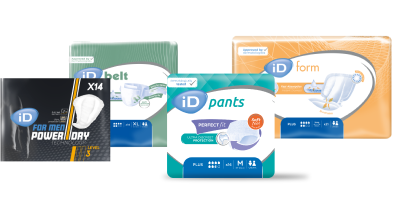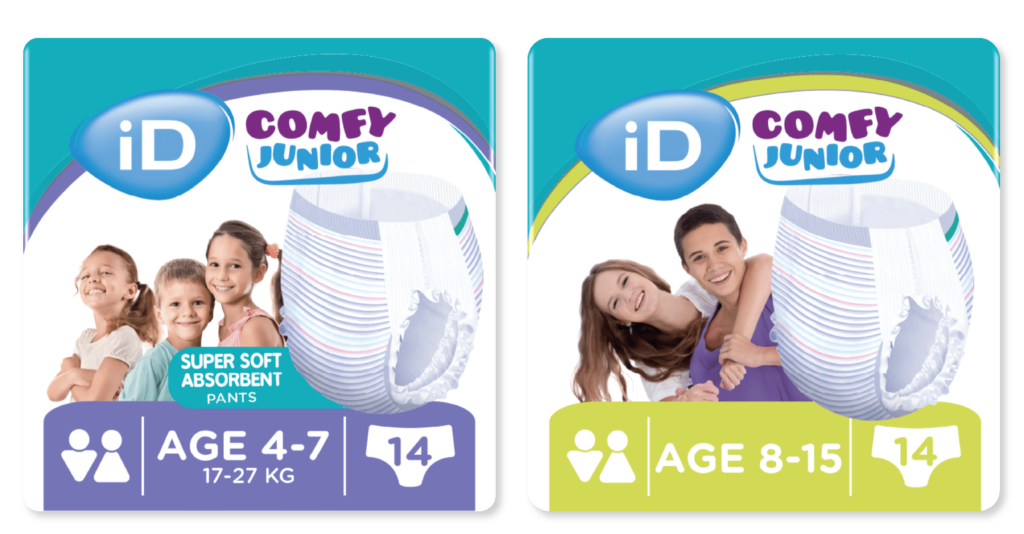How can you protect your mattress from bedwetting leaks?
Bedwetting (or nocturnal enuresis) refers to the involuntary leaking of urine while you sleep1. While the percentage of kids experiencing this condition decreases as they get older, it’s still a fairly common condition, affecting around 21% of four-and-a-half-year-olds2. Nonetheless, older children and adults can experience it too, and can be very frustrating, particularly when it comes to protecting your mattress from leaks. Read on for our top tips on managing night-time leaks and keeping your furniture dry.
What is bedwetting?
Bladder issues are common in young children as they are being potty trained3. However, the frequency of bedwetting does decrease with time; once they reach nine-and-a-half years old, only 8% of children are wetting the bed and this drops further to around 3% of adolescents and about 1% of adults4. While it’s often just a perfectly natural part of growing up, other things can cause nocturnal enuresis, including:
- the bladder not stretching enough overnight to hold wee
- producing too much urine at night
- not waking up when their bladder is full5
- a hormonal imbalance
- a urinary tract infection
- diabetes
- constipation6
- the condition running in your family.
While most children grow out of this issue, you should always consult your doctor if you have any concerns. This is particularly recommended if your child:
- is still wetting the bed after the age of seven
- begins to wet the bed again after being dry previously
- is also experiencing pain, increased thirst, pinkish pee, hard stools or snoring8.

How do you protect mattresses from bedwetting?
Understandably, many parents and carers find the extra washing associated with bedwetting frustrating and potentially overwhelming. However, there are plenty of things you can try to make life easier, such as:
- a bedwetting alarm, which may help to prevent leaks in the first place9
- disposable mattress protectors, such as iD Protect. These continence products are designed to provide a high level of softness and absorbency, offering a peaceful and dry night’s sleep. Plus, they can be used on other furniture too, such as chairs, meaning they are useful for people experiencing urinary incontinence
- a waterproof mattress cover made of a material like vinyl, which can be wiped clean
- swapping bulky duvets for lighter-weight sheets that can be washed and dried more quickly
- washing bedding as soon as possible after an accident
- if the mattress does get wet, spot-clean it as soon as possible by sponging up the urine and using a small amount of specific mattress cleaner on the area. Alternatively, you could steam clean the area.10
Do you want a 20% discount on your first order?
Receive incontinence tips, expert advice, and promotions by email.
Other tips for managing bedwetting
Another way to protect a mattress from leaks caused by bedwetting is to get to the root of the problem, by taking steps to improve bedwetting symptoms. Here are some tips to try:
- motivational therapy: this involves incentivising your child to take control of their nocturnal enuresis. You can offer rewards for things like a dry night, helping to change wet bedding and remembering to use the toilet before bedtime11
- change your/your child’s routine by:
- drinking more during the morning and early afternoon; keeping hydrated throughout the day is important, but limit drinks right before bed.
- going to the toilet regularly during the day (about four to seven times a day) and just before bed.
- weeing twice before bed, about half an hour apart, to ensure the bladder is fully empty and has room to store urine produced overnight.
- avoiding caffeinated drinks, such as coffee, tea and colas, and fizzy drinks, which are diuretics (make you pee more) and can irritate the bladder.
- leaving out dry pyjamas and towels so you can clean up easily (or your child can do so independently)12
- avoiding certain foods and drinks, like citrus, artificial colours, flavours and sweeteners, which are bladder irritants13.
- use a suitable continence product, such as iD Comfy Junior. These pants are designed to look like real underwear, while offering great absorption, discretion and comfort
- alcohol, which can cause you to produce more urine at night. This is because it reduces the amount of antidiuretic hormone your body makes, which tells your kidneys to work less hard at night.14 Quitting smoking may also help, as a chronic cough can cause stress incontinence and cigarette smoke is a bladder irritant.15
Hopefully, by following these tips, you can enjoy more frequent dry nights, and if the occasional leak happens due bedwetting, you can rest assured that the mattress is protected.
What is my ideal solution?

Sources
1 “Nocturnal Enuresis (‘bedwetting’) in children”, Cambridge University Hospitals, 11 May 2020, Source: https://www.cuh.nhs.uk/patient-information/nocturnal-enuresis-bedwetting-in-children/
2 “Bedwetting: The facts”, Bladder & Bowel UK, 18 May 2021, Source: https://www.bbuk.org.uk/bedwetting-the-facts/
3 “Nocturnal Enuresis (‘bedwetting’) in children”, Cambridge University Hospitals, 11 May 2020, Source: https://www.cuh.nhs.uk/patient-information/nocturnal-enuresis-bedwetting-in-children/
4 “Bedwetting: The facts”, Bladder & Bowel UK, 18 May 2021, Source: https://www.bbuk.org.uk/bedwetting-the-facts/
5 “Bedwetting – reasons and how to stop it”, eric, October 2022, Source: https://eric.org.uk/childrens-bladders/bedwetting/?gclid=Cj0KCQjw_r6hBhDdARIsAMIDhV-6pCAD8Odvz9qhy_xg5SyA_Ei1lpGWtsvPAyiv_Htc5odYDj6d3nMaAom6EALw_wcB
6 “Bed-wetting”, Mayo Clinic Staff, 26 October 2017, Source: https://www.mayoclinic.org/diseases-conditions/bed-wetting/symptoms-causes/syc-20366685
7 “Bedwetting in children”, NHS, 27 April 2020, Source: https://www.nhs.uk/conditions/bedwetting/

